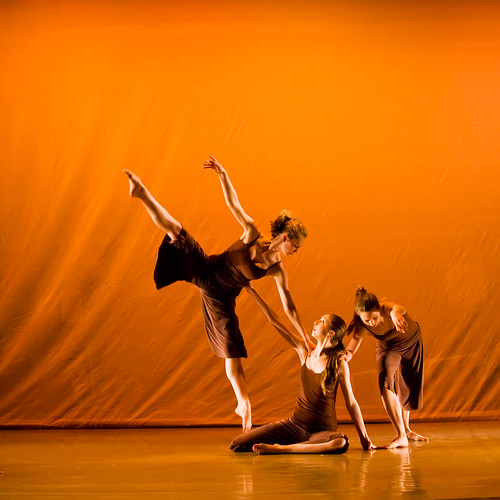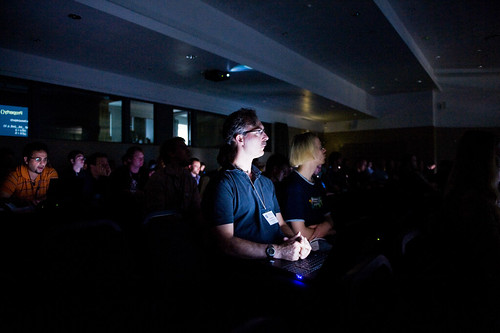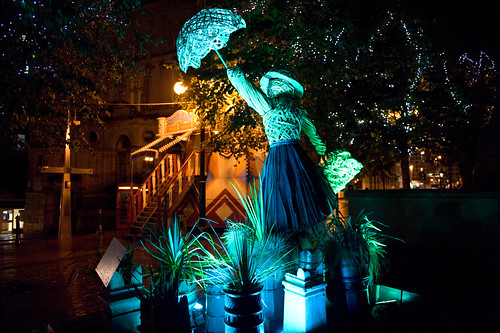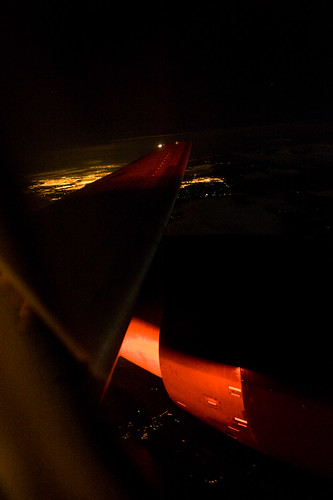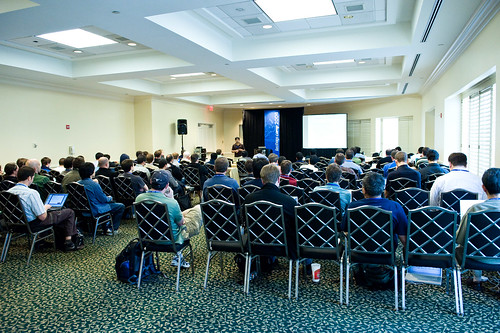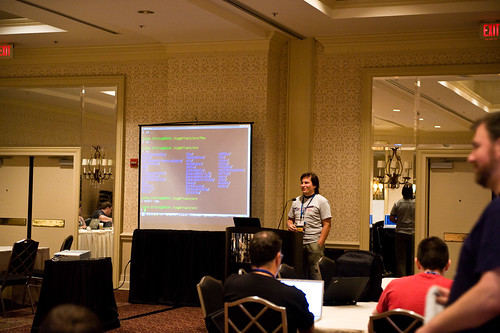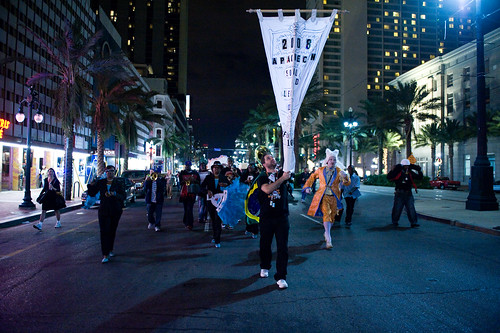I have usernames on most of the major lifestreaming services (Twitter, FriendFeed, identi.ca, and so on). For a variety of reasons, I really only use Twitter, and the only way that Twitter is useful / manageable for me is the existence of rich client side applications.
Mac OS X
For some time, I’ve been using Craig Hockenberry’s excellent Twitterific. I liked the UI, and the feature set was good. From time to time, I would try the Adobe AIR based twhirl, which had the virtue of also being a FriendFeed and identi.ca client. Unfortunately, I could never keep twhirl because of a bug in AIR 1.1 that caused clicked URLs to open in a new Firefox window instead of a new tab. That bug was fixed in this weeks AIR 1.5 release, so I gave twhirl another try earlier this week. I liked having FriendFeed and identi.ca up (having identi.ca up meant that I saw Allison Randall’s messages about the Parrot Developer summit and their new release schedule). I didn’t like having a window for each service — I don’t care about keeping it separate, and I’m still having some trouble finding a theme that works for my aging eyes. Twhirl also doesn’t seem to remember window positions between runs, which makes the multiple windows even more of a pain. I also miss seeing people’s “real names” and the Growl notifications that I was getting from Twitterific. I put twhirl back on the shelf, but will probably come back to it again.
A week or two ago, I discovered Syrinx, which is a Twitter only client. There were a few things that persuaded me to try it out. The ability to set a bookmark at some point in the message stream and then go back to it. This seems to work better for my style of reading than individual read/unread markers on each Tweet. The keyboard shortcut means that I can jump right to where I left off, which is nice. Syrinx also lets you search the stream, which is useful. I follow enough people that searching is useful. I was also (incorrectly) under the impression that Syrinx would save a slice of the message stream locally, which would be a nicety. I can page backwards on the Twitter site, but that way lies pain. Syrinx has a way of tracking twitter “conversations” and finding the supposedly relevant tweets and presenting them. I like this idea, I just wish it wouldn’t take over the main message stream window in order to show it. The biggest problem with Syrinx is that there something awfully bloated in there, which means that after some time, the app is eating memory and slowing down. Which means you have to restart it, which means you have to catch up first. MRR, the author of Syrinx, knows that this is a problem and is working on a solution. I hope that won’t take a long time.
Because of the AIR 1.5 release I also tried TweetDeck this week. I tried it, and there were some interesting features. I liked the ability to make my own groups of people – but Twitter should be supporting that. I also liked the way that replies and direct messages could be in their own column – I really liked that, actually. I liked the idea of TwitScoop, but what I’d really like would be a TwitScoop of my Twitter network – that would be cool. TweetDeck was great when I put it on my 30″ main display. You can see lots of stuff and quickly see if there is anything useful. Unfortunately, I’m not willing to dedicate that much screen real estate — whatever client I use has to live (and share) on the “outboard” main LCD of the MacBook Pro.
iPhone
When I got my iPhone, I started using Twinkle. There pretty much wasn’t anything else, and I sort of liked the idea of having some kind of location awareness of people using the service. Turns out that very few people that I know use the Twinkle location stuff, and I’ve pretty much switched to using Brightkite for that kind of thing, and even there, the jury is out. User interface wise, I like the fact that it colors replies and direct messages differently — it makes them much easier to pick out. I don’t like that I have to tap on a tweet containing a link in order to open the link.
I’ve since switched to using the iPhone version of Twitterific. I don’t have to tap on tweets to follow links, and Twitterific is pretty good about storing a decent number of tweets on the phone. I can usually take a 2 hour plane flight and not have missed much when I land on the other side. I’d love to not miss anything at all. One annoyance is that Twitterific for iPhone doesn’t remember the last tweet that I was looking at very well, so I end up doing a lot more scrolling than I should have to.
Wish List
Here’s a consolidation of the some of the things that I think are important in rich clients for Twitter and services like it.
- Good management of windows – I don’t want a window for each service – I want one big stream.
- Good visual design that easily lets you differentiate between different kinds of messages (tweets/replies/direct messages). Make links easy to see and follow.
- Keep a local, searchable, history of messages.
- Provide a good, low maintenance way for me to keep my place in a busy stream.
- Give me a way to follow conversations (chains of replies). I would be happy to have a menu for this.
- Integrate some of the third party services that are springing up, like TwitScoop.
On the mobile side, there is one feature that I would consider killer.
I want a “direct message” rolodex. There are people who I want to direct message on a frequent basis. I don’t remember everybody’s twitter user name – that’s what computers are for. I want a “picker” that contains a “speed direct message” list. That would be awesome.
This is one space where rich/desktop applications are by no means dead.




